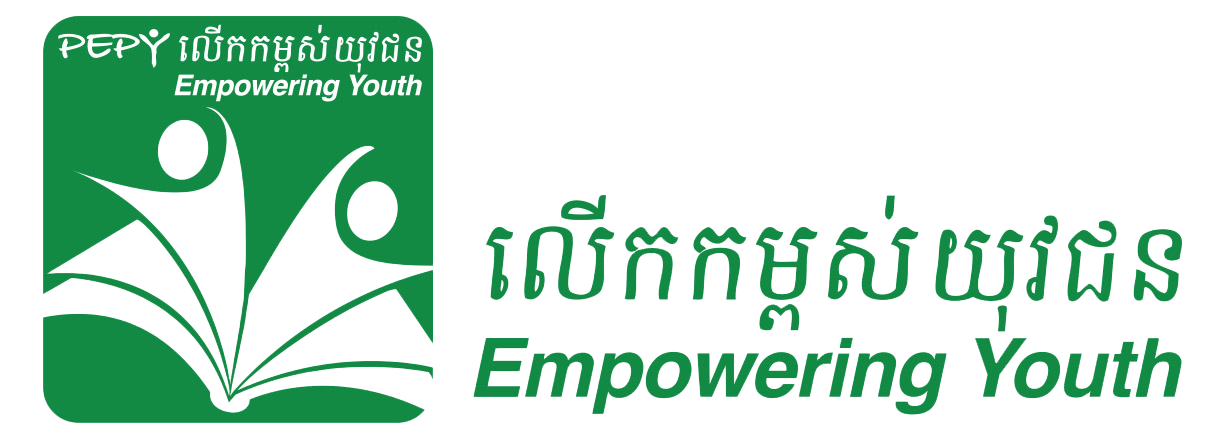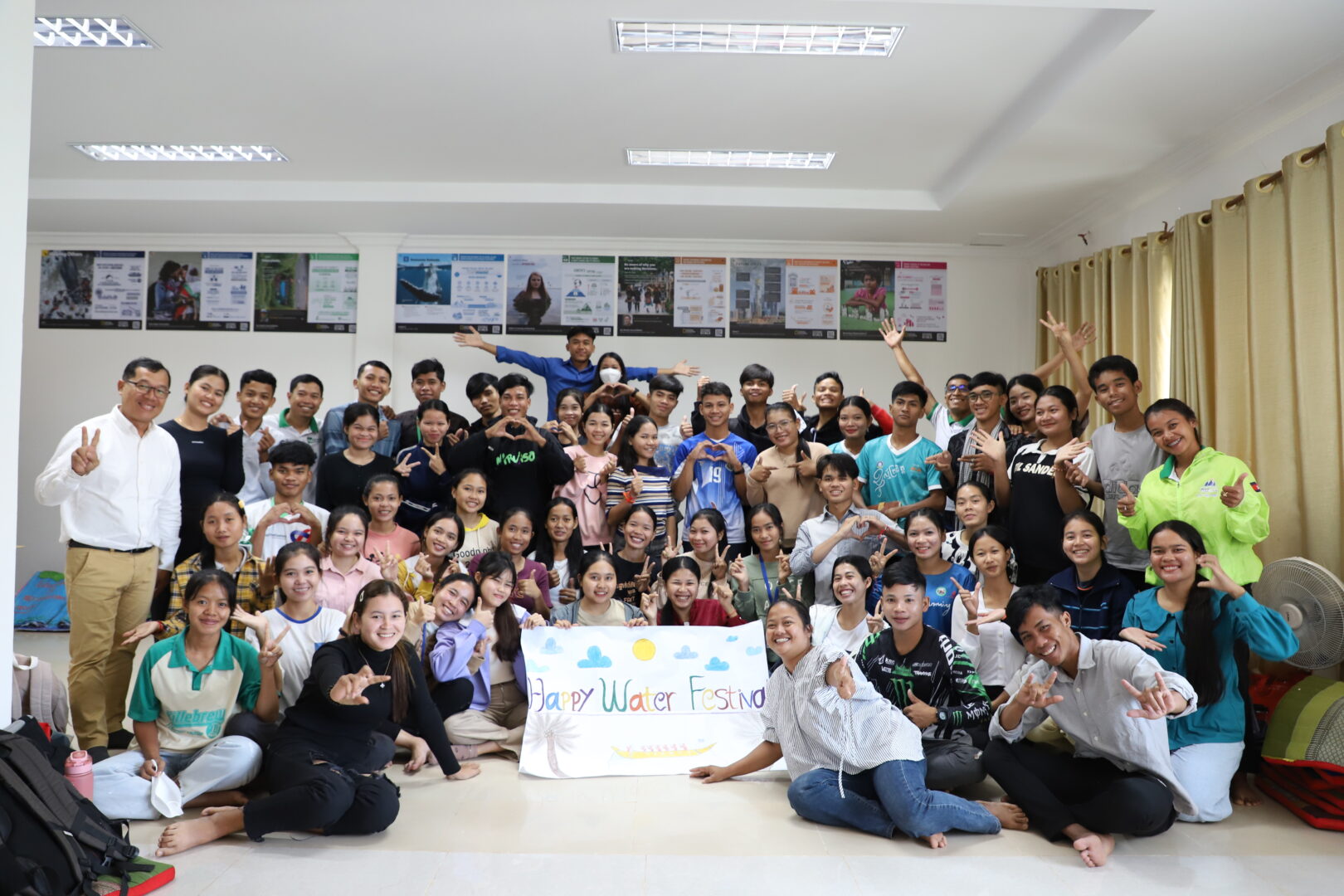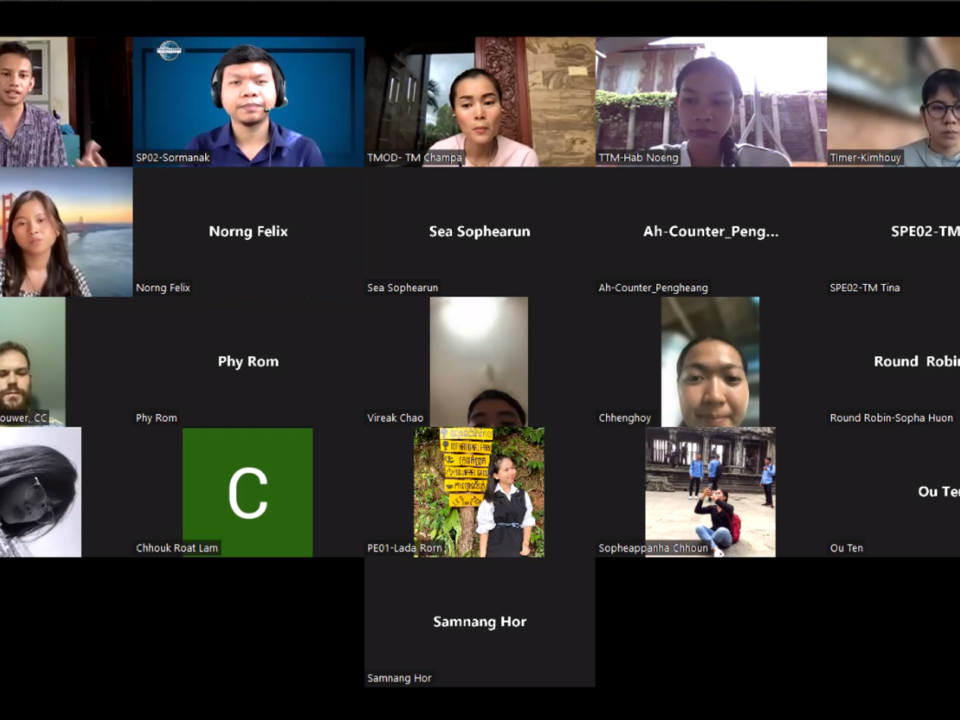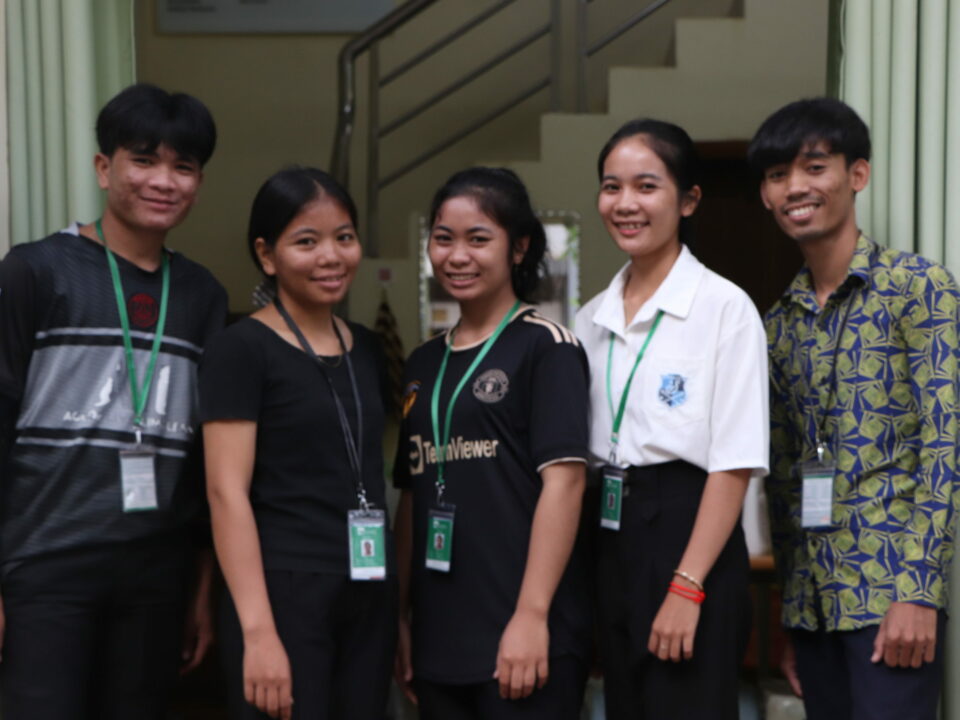Assessing Volunteer Tourism (Voluntourism) and Traveler Philanthropy
February 28, 2009Changing the World on Vacation: A Film Highlighting PEPY’s Mistakes and Lessons Learned
March 3, 2009 The museum is broken into sections starting with the history from the Fu-nan and Chenla periods where the only recorded information is from Chinese records. From there, the museum highlights Khmer kings, Angkor sculpture and their significance, Hindu and Buddhist stories and temples, and traditional Angkorian dress and architecture. Small groups of students were each given a topic to research before and during their museum visit. For most students, it was the first time they had been in a two story building and in air conditioning, so there was much to be overwhelmed about than the just fascinating history brought to life with video, sound stations, and elaborate displays. Four museum guides took the students through the museum sharing the highlights of each room and then the students were given time to research their given topic. They will present the the newly-learned topics to their classmates in the coming weeks.
The museum is broken into sections starting with the history from the Fu-nan and Chenla periods where the only recorded information is from Chinese records. From there, the museum highlights Khmer kings, Angkor sculpture and their significance, Hindu and Buddhist stories and temples, and traditional Angkorian dress and architecture. Small groups of students were each given a topic to research before and during their museum visit. For most students, it was the first time they had been in a two story building and in air conditioning, so there was much to be overwhelmed about than the just fascinating history brought to life with video, sound stations, and elaborate displays. Four museum guides took the students through the museum sharing the highlights of each room and then the students were given time to research their given topic. They will present the the newly-learned topics to their classmates in the coming weeks.
 After the museum experience, we joined ten of Thavry’s Build Bright University (BBU) classmates at a local Khmer restaurant. They each joined a table of eager students to talk about university. Students in Chanleas Dai rarely have the opportunity to meet university graduates/students, so this was a great opportunity for them to learn more about higher education, something which is likely not discussed much at home. “What do you study in university? What can you do after you graduate? How much does it cost? Are there scholarships? Why did you decide to study in university?” Even the teachers from Chanleas Dai, both PEPY staff and government teachers, were asking questions as they too wanted to know what it was like to study in Siem Reap.
After the museum experience, we joined ten of Thavry’s Build Bright University (BBU) classmates at a local Khmer restaurant. They each joined a table of eager students to talk about university. Students in Chanleas Dai rarely have the opportunity to meet university graduates/students, so this was a great opportunity for them to learn more about higher education, something which is likely not discussed much at home. “What do you study in university? What can you do after you graduate? How much does it cost? Are there scholarships? Why did you decide to study in university?” Even the teachers from Chanleas Dai, both PEPY staff and government teachers, were asking questions as they too wanted to know what it was like to study in Siem Reap.
 The BBU students then brought us to visit their campus and meet with one of the directors. Packed into a large room, all 100 students were each seated at their own desks, watching a PowerPoint projection in an air conditioned university classroom. It was hard not to cross your fingers and make a wish that some day some of these same students would indeed be sitting here again working towards a degree. The presentation was long, but the students continued to ask many questions once it was done, so there seemed to be genuine interest in what was being shared about BBU.
The BBU students then brought us to visit their campus and meet with one of the directors. Packed into a large room, all 100 students were each seated at their own desks, watching a PowerPoint projection in an air conditioned university classroom. It was hard not to cross your fingers and make a wish that some day some of these same students would indeed be sitting here again working towards a degree. The presentation was long, but the students continued to ask many questions once it was done, so there seemed to be genuine interest in what was being shared about BBU.
The day ended with a visit to Bayon temple in the Angkor Thom complex, a site they had just learned more about during their museum visit. I hope the students were climbing through the temples projecting their future and for many, I hope that future includes finishing junior high school and high school. If one day, one of those students goes on to finish university, there will be more than just the smiling faces of Bayon looking down on their graduation day. With the seed planted in their heads, the knowlege that scholarships exist, and the chance to meet university students and ask questions, I hope I get to attend one of these student’s graduations nine years from now. Fingers crossed….



